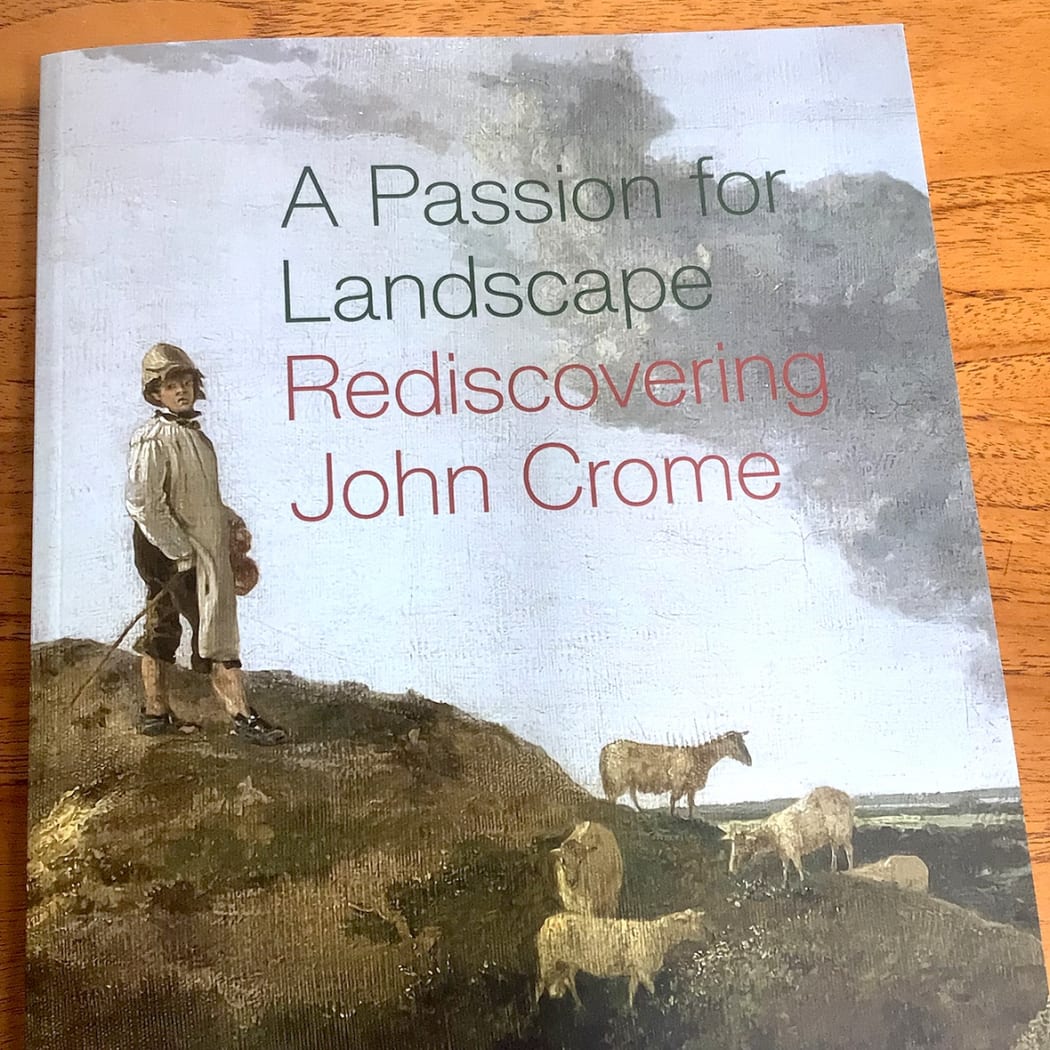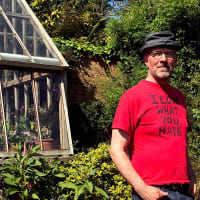
Our third visit to a gallery since the perculiarly anticlimactic easing of national lockdown was to the Castle Museum Norwich, to view the exhibition A Passion for Landscape Rediscovering John Crome curated by Giorgia Bottinelli. The usual routes onto the castle mound have been closed by the builders as the keep is to be substantially altered to make the awkward layout of what was essentially the city lockup, more hospitable to visitors and the collections it houses. Cranes, scaffolding and metal ramps have been moved into place and a village of temporary workmen's cabins has mushroomed in the grounds. So it felt like an achievement to swerve past these new obsticles, get signed in by the friendly attendents as they ushered us into one of the lower level galleries (dedicated to Timothy Gurney) to view what is a treat: an exhibition of paintings by a Norfolk-based painter of national stature.
John Crome's name is associated with the establishment of the Norwich Society of Artists at the turn of the nineteenth-century (he was a founder member), and its later development into the Norwich School, the only recognised art school outside of London. It is a measure of Crome's significance, both as an artist as well as a tutor and influencer that he was able to train and go on to sustain a career as a landscape painter who exhibited in London, given his parallel activity as a commercial sign painter in what was at the time Britain's second city.
Crome travelled a little, something that was not always open to an artist without family contacts in other parts of the country and the funds to do so. There are charming paintings of a street market scene in Paris and a quayside fish market in Boulogne. Rich pickings from his only journey to France. Derbyshire and the English Lake District also feature among the locations he visited, in this case with members of the Quaker banking family, the Gurneys. It is wonderfully appropriate that the exhibition is being held in a gallery dedicated to a Gurney, several generations for whom he was a well-respected drawing tutor. However, despite these outings to other parts of the country that could be considered more conventionally picturesque it is clear from the paintings he made of the River Wensum Norwich that he was the consumate interpreter of what we would now describe as transitory landscapes. He has an eye for open locations (Mousehold Heath, Norwich), that seem featureless or that harbour burgeoning industrial activity, like mill buildings recently positioned with their business focussed upon the river front as the commercial highway, rather than picturesque backwater. That is what is refreshing about Crome's work. There is no denying his technical and interpretive skill, but what raises his work above that of his contemporaries was his focus on the open areas around Norwich that were to be shortly incorporated within the influence of the city. His work is firmly rooted in the tangible. He was alert to the possibility that the settings he was depicting were changing irrevocably and would be gone in a moment. A rare gift.
A Passion for Landscape is at the Norwich Castle Museum and Art Gallery until 5th September 2021. There is an excellent catalogue (see above) edited by Curator Giorgia Bottinelli to accompany the exhibition.
About the author

Paul Barratt
Paul Barratt started working in contemporary art galleries in 1989, having graduated in Fine Art from Goldmsith’s, London University. He initially worked at Anthony d’Offay Gallery, one of the contemporary art dealers, who dominated the London art market in the 80s and 90s. He was approached by the Lisson Gallery to be gallery manager for the influential art dealer Nicholas Logsdail. This was followed by a short period in New York at Gladstone Gallery, to work for visionary art dealer Barbara Gladstone, working with the artist and filmmaker Matthew Barney.
On his return to London, Paul secured a place on the postgraduate curatorial course at the Royal College of Art, to complete an MA. After graduation in 2001, he worked as an independent curator on several projects in Oslo, London, Brighton and Basel, before joining Paul Vater at his design agency Sugarfree in 2004. He has worked with Paul ever since.

